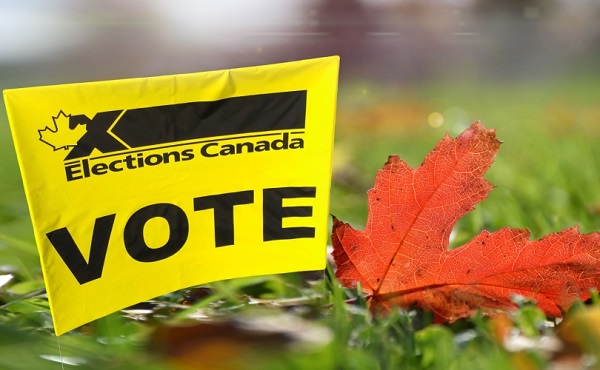Business
Long Ignored Criminal Infiltration of Canadian Ports Lead Straight to Trump Tariffs
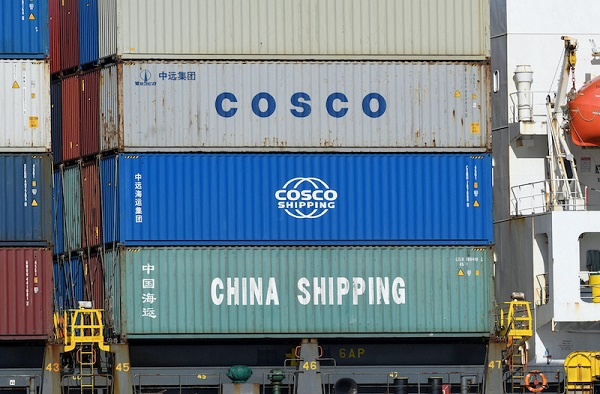
Sam Cooper
Briefings to Liberal Government on Chinese Infiltration of Vancouver Port and Canada’s Opioid Scourge Ignored
Trump Tariffs Loom as Critics Decry Ottawa’s “Fox in the Hen House” Approach to Border Security
As President Donald Trump readies sweeping tariffs against Canada on Saturday—citing Ottawa’s failure to secure its shared North American borders from fentanyl originating in China—The Bureau has obtained a remarkable December 1999 document from a senior law enforcement official, revealing Ottawa’s longstanding negligence in securing Vancouver’s port against drug trafficking linked to Chinese shipping entities.
The Bureau is a reader-supported publication.
To receive new posts and support my work, consider becoming a free or paid subscriber.
The letter, drafted by former Crown prosecutor Scott Newark and addressed to Ottawa’s Security Intelligence Review Committee (SIRC), urged the body to reconsider explosive findings from a leaked RCMP and CSIS report detailing the infiltration of Canada’s “porous” borders by Chinese criminal networks.
Titled “Re: S.I.R.C. Review in relation to Project Sidewinder,” Newark’s letter alleges systemic failures that enabled Chinese State Council owned shipping giant COSCO and Triads with suspected Chinese military ties to penetrate Vancouver’s port system. He further asserts that federal authorities ignored repeated briefings and warnings from Canadian law enforcement—warnings based on intelligence gathered by Canadian officials in Hong Kong, who initiated the Sidewinder review.
Newark also warned that Liberal Prime Minister Jean Chrétien’s decision to dismantle Canada’s specialized Ports Police and privatize national port control had left the country dangerously exposed to foreign criminal networks, noting he had personally briefed the Canadian government on these concerns as early as 1996.
Addressing his letter to SIRC’s chair, Quebec lawyer Paule Gauthier, Newark wrote:
“As the former (1994-98) Executive Officer of the Canadian Police Association, I was assigned responsibility for dealing with the issue of the federal government’s changes to control of the national ports and policing therein.”
“This involved close examination of matters such as drug, weapon, and people smuggling through the national ports and, in particular, both the growing presence of organized criminal groups at ports and the ominous hazard control of those ports by such groups represented.”
Newark’s letter goes on to allege widespread failures in Ottawa that facilitated Chinese Triad infiltration of Vancouver’s port, revealing federal authorities’ reluctance to act on warnings from RCMP officer Garry Clement and immigration control officer Brian McAdam—former Canadian officials based in Hong Kong who had sounded the alarm, prompting the Sidewinder review.
Newark explained to SIRC’s chair that, during his tenure as Executive Officer of the Canadian Police Association, he prepared approximately fifty detailed policy briefs for the government and regularly appeared before parliamentary committees and in private ministerial briefings.
“I can assure you that in all of that time, no clearer warning was ever given by Canada’s rank and file police officers to the national government than what was done in our unsuccessful attempt to prevent the disbandment of the specialized Canada Ports Police in combination with the privatization of the ports themselves,” Newark’s letter to SIRC states.
The letter continues, noting that in October 1996, Newark met with Chrétien’s Transport Minister David Anderson—later addressing the Transport Committee—to highlight the imminent threat posed by Asian organized crime’s infiltration of port operations. Newark’s written briefing to the Minister underscored the gravity of the situation with a blunt question:
“Who exactly are the commercial port operators?”
Citing the Anderson briefing document, Newark’s letter to SIRC states that Anderson had been warned:
“We are, for example, aware of serious concerns amongst the international law enforcement community surrounding the ownership of ports and container industries in Asia and, in particular, Hong Kong, Taiwan, and the People’s Republic of China. There is simply no longer any doubt that drugs like heroin are coming from these destinations through the Port of Vancouver, moved by organized criminal gangs whose assets include ‘legitimate’ properties.”
The Anderson briefing also referenced a British Columbia anti-gang unit report, titled “Organized Crime on Vancouver Waterfront,” which made clear that the Longshoreman’s Union had been infiltrated by the Hells Angels.
“The movement of goods through Canada’s ports requires an independence in policing that is impossible without public control,” the report warned.
It concluded:
“This report should be taken as a specific warning to this Government that, prior to downloading operational control over the ports themselves to private interests, Government be absolutely certain as to who owns what—and that it can continue that certainty with power to refuse acquisition of port assets in the future.”
Scott Newark’s letter to SIRC then turns to new intelligence—gathered from Canadian and U.S. officials—that further underscored the vulnerability created by Chrétien’s border policies.
“To now learn that law enforcement and public officials in Canada and the United States have linked a company (COSCO), granted docking and other facilities in Vancouver, to Asian organized crime, arms and drug smuggling is, to say the least, disturbing,” Newark’s December 1999 letter states.
“That this company, its principals, subsidiaries, and partners have been associated with various military agencies of a foreign government—agencies themselves identified by Canadian and American officials as having unhealthy connections to Triad groups—makes a bad situation even worse.”
Newark next addressed the broader implications of Canada’s failure to enforce border security, particularly in relation to the deportation of foreign criminals—a process he had sought to reform while serving with the Canadian Police Association.
Drawing on his experience, he described a deeply flawed immigration enforcement system, one that allowed individuals with serious criminal records to remain in Canada indefinitely. The problem, he wrote, was twofold: not only were foreign criminals able to enter Canada with ease, but authorities also failed to deport those with outstanding arrest warrants.
Newark recounted how, in 1996, a Cabinet Minister requested that he meet with Brian McAdam, a former senior foreign service officer in Hong Kong who had spent years uncovering organized crime’s grip on Canada’s immigration system. McAdam’s detailed revelations, he wrote, had directly led to the launch of Project Sidewinder.
Newark told SIRC that even after leaving the Canadian Police Association in 1998, he remained in contact with McAdam and other officials working to expose this vast and complex national security risk posed by foreign criminal networks.
It was this ongoing communication that led to an even more alarming discovery. Newark wrote that he was stunned to learn that Canada’s government had not only terminated Project Sidewinder but had gone so far as to destroy some related files.
The Bureau is a reader-supported publication.
To receive new posts and support my work, consider becoming a free or paid subscriber.
Newark suggests SIRC’s chair, in her review of Sidewinder, should determine whether “Sidewinder should not have been cancelled … why such inappropriate action was taken and at whose direction this was done.”
He concludes that SIRC should also freshly examine why intelligence reporting from the Canadian officials in Hong Kong, Brian McAdam and Garry Clement had been ignored in Ottawa.
Newark’s letter to SIRC says these failures to act on intelligence included the “Inappropriate granting of visas to Triad members or associates” and “Granting of docking facilities with attendant consequences to COSCO”—and “Failure of CIC and Foreign Affairs to respond appropriately to the various information supplied by McAdam and Clement in relation to material pertaining to Sidewinder.”
In an exclusive interview with The Bureau, Garry Clement, who contributed to investigations referenced in Newark’s letter, corroborated many of its claims and provided further insight. Clement recalled his role in Project Sunset, a 1990s investigation into Chinese Triads’ efforts to gain control over Vancouver’s ports.
“I can remember having a discussion with Scott when he wrote that to SIRC because Scott and I go back a long time,” Clement said. “I knew about him writing on it, but I knew it was also buried.”
He described his own intelligence work during the same period:
“I wrote in the nineties when I was the liaison officer in Hong Kong, a very long intelligence brief on the Chinese wanting to basically acquire or build out a port at the Surrey Fraser Docks area. And it was going to be completely controlled by that time, with Triad influence, but it was going to be controlled by China.”
Clement expressed frustration that decades of warnings had gone unheeded:
“The bottom line is that here we are almost 40 years later, talking about an issue that was identified in the ‘90s about our ports and allowing China to have free access—and nothing has been done over that period of time.”
Newark’s urgent recommendation for SIRC to reconsider Sidewinder’s warnings on Vancouver’s ports was never acted upon.
“We still don’t have Port Police. We got nobody overseeing them,” Clement added. “The ports themselves, it’s sort of like putting a fox in the hen house and saying, ‘Behave yourself.’”
Finally, when asked about the Trudeau government’s claim this week that Canada is responsible for only one percent of the fentanyl entering the United States—a figure reported widely in Canadian media—Clement’s response was unequivocal.
“The fact that we’ve become a haven for transnational organized crime, it’s internationally known,” he said. “So when I read that, with the fentanyl—Trump is wrong in that there’s less than 1% of our fentanyl going to the United States. That’s a crock of shit. If you look at the two super labs that were taken down in British Columbia—I think there’s three now—the amount they were capable of producing was more than the whole Vancouver population could have used in 10 years. So we know that Vancouver has become a transshipment point to North America for opiates and cocaine and other drugs because it’s a weak link, and enforcement is not capable of keeping up with transnational organized crime.”
The Bureau is a reader-supported publication.
To receive new posts and support my work, consider becoming a free or paid subscriber.
That opinion is evidently acknowledged by British Columbia Premier David Eby, according to documents from Canada’s Foreign Interference Commission that say Eby sought meetings with Justin Trudeau’s National Security Advisor.
A record from the Hogue Commission, sanitized for public release, outlines the “context and drivers” behind Eby’s concerns, including “foreign interference; election security; countering fentanyl, organized crime, money laundering, corruption.”
The documents state Ottawa’s Privy Council Office—which provides advice to Justin Trudeau’s cabinet—had recommended that British Columbia continue to work with the federal government on initiatives like the establishment of a new Canada Financial Crimes Agency to bolster the nation’s ability to respond swiftly to complex financial crimes.
Additionally, the PCO highlighted that Canada, the United States, and Mexico were supposedly collaborating on strategies to reduce the supply of fentanyl, including addressing precursor chemicals and preventing the exploitation of commercial shipping channels—a critical area where British Columbia, and specifically the Port of Vancouver, plays a significant role.
Eby acknowledged the concerns again this week in an interview with Macleans.
“I understood Trump’s concerns about drugs coming in. We’ve got a serious fentanyl problem in B.C.; we see the precursor chemicals coming into B.C. from China and Mexico. We see ties to Asian and Mexican organized crime groups. We’d been discussing all of that with the American ambassador and fellow governors. That’s why it was such a strange turnaround, from ‘Hey, we’re working together on this!’ to suddenly finding ourselves in the crosshairs.”
Yet, despite Eby’s claims of intergovernmental efforts, critics—including Garry Clement—argue that nothing has changed. Vancouver’s port remains alarmingly vulnerable, a decades-old concern that continues to resurface as fentanyl and other illicit drugs flood North American markets.
The Bureau is a reader-supported publication.
To receive new posts and support my work, consider becoming a free or paid subscriber.
Automotive
Major automakers push congress to block California’s 2035 EV mandate

 MxM News
MxM News
Quick Hit:
Major automakers are urging Congress to intervene and halt California’s aggressive plan to eliminate gasoline-only vehicles by 2035. With the Biden-era EPA waiver empowering California and 11 other states to enforce the rule, automakers warn of immediate impacts on vehicle availability and consumer choice. The U.S. House is preparing for a critical vote to determine if California’s sweeping environmental mandates will stand.
Key Details:
-
Automakers argue California’s rules will raise prices and limit consumer choices, especially amid high tariffs on auto imports.
-
The House is set to vote this week on repealing the EPA waiver that greenlit California’s mandate.
-
California’s regulations would require 35% of 2026 model year vehicles to be zero-emission, a figure manufacturers say is unrealistic.
Diving Deeper:
The Alliance for Automotive Innovation, representing industry giants such as General Motors, Toyota, Volkswagen, and Hyundai, issued a letter Monday warning Congress about the looming consequences of California’s radical environmental regulations. The automakers stressed that unless Congress acts swiftly, vehicle shipments across the country could be disrupted within months, forcing car companies to artificially limit sales of traditional vehicles to meet electric vehicle quotas.
California’s Air Resources Board rules have already spread to 11 other states—including New York, Massachusetts, and Oregon—together representing roughly 40% of the entire U.S. auto market. Despite repeated concerns from manufacturers, California officials have doubled down, insisting that their measures are essential for meeting lofty greenhouse gas reduction targets and combating smog. However, even some states like Maryland have recognized the impracticality of California’s timeline, opting to delay compliance.
A major legal hurdle complicates the path forward. The Government Accountability Office ruled in March that the EPA waiver issued under former President Joe Biden cannot be revoked under the Congressional Review Act, which requires only a simple Senate majority. This creates uncertainty over whether Congress can truly roll back California’s authority without more complex legislative action.
The House is also gearing up to tackle other elements of California’s environmental regime, including blocking the state from imposing stricter pollution standards on commercial trucks and halting its low-nitrogen oxide emissions regulations for heavy-duty vehicles. These moves reflect growing concerns that California’s progressive regulatory overreach is threatening national commerce and consumer choice.
Under California’s current rules, the state demands that 35% of light-duty vehicles for the 2026 model year be zero-emission, scaling up rapidly to 68% by 2030. Industry experts widely agree that these targets are disconnected from reality, given the current slow pace of electric vehicle adoption among the broader American public, particularly in rural and lower-income areas.
California first unveiled its plan in 2020, aiming to make at least 80% of new cars electric and the remainder plug-in hybrids by 2035. Now, under President Donald Trump’s leadership, the U.S. Transportation Department is working to undo the aggressive fuel economy regulations imposed during former President Joe Biden’s term, offering a much-needed course correction for an auto industry burdened by regulatory overreach.
As Congress debates, the larger question remains: Will America allow one state’s left-wing environmental ideology to dictate terms for the entire country’s auto industry?
Business
Net Zero by 2050: There is no realistic path to affordable and reliable electricity
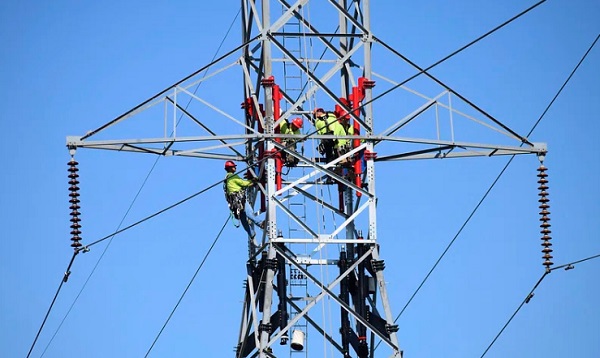
 By Dave Morton of the Canadian Energy Reliability Council.
By Dave Morton of the Canadian Energy Reliability Council.
Maintaining energy diversity is crucial to a truly sustainable future
Canada is on an ambitious path to “decarbonize” its economy by 2050 to deliver on its political commitment to achieve net-zero greenhouse gas (GHG) emissions. Although policy varies across provinces and federally, a default policy of electrification has emerged, and the electricity industry, which in Canada is largely owned by our provincial governments, appears to be on board.
In a November 2023 submission to the federal government, Electricity Canada, an association of major electric generators and suppliers in Canada, stated: “Every credible path to Net Zero by 2050 relies on electrification of other sectors.” In a single generation, then, will clean electricity become the dominant source of energy in Canada? If so, this puts all our energy eggs in one basket. Lost in the debate seem to be considerations of energy diversity and its role in energy system reliability.
What does an electrification strategy mean for Canada? Currently, for every 100 units of energy we consume in Canada, over 40 come to us as liquid fuels like gasoline and diesel, almost 40 as gaseous fuels like natural gas and propane, and a little less than 20 in the form of electrons produced by those fuels as well as by water, uranium, wind, solar and biomass. In British Columbia, for example, the gas system delivered approximately double the energy of the electricity system.
How much electricity will we need? According to a recent Fraser Institute report, a decarbonized electricity grid by 2050 requires a doubling of electricity. This means adding the equivalent of 134 new large hydro projects like BC’s Site C, 18 nuclear facilities like Ontario’s Bruce Power Plant, or installing almost 75,000 large wind turbines on over one million hectares of land, an area nearly 14.5 times the size of the municipality of Calgary.
Is it feasible to achieve a fully decarbonized electricity grid in the next 25 years that will supply much of our energy requirements? There is a real risk of skilled labour and supply chain shortages that may be impossible to overcome, especially as many other countries are also racing towards net-zero by 2050. Even now, shortages of transformers and copper wire are impacting capital projects. The Fraser Institute report looks at the construction challenges and concludes that doing so “is likely impossible within the 2050 timeframe”.
How we get there matters a lot to our energy reliability along the way. As we put more eggs in the basket, our reliability risk increases. Pursuing electrification while not continuing to invest in our existing fossil fuel-based infrastructure risks leaving our homes and industries short of basic energy needs if we miss our electrification targets.
The IEA 2023 Roadmap to Net Zero estimates that technologies not yet available on the market will be needed to deliver 35 percent of emissions reductions needed for net zero in 2050. It comes then as no surprise that many of the technologies needed to grow a green electric grid are not fully mature. While wind and solar, increasingly the new generation source of choice in many jurisdictions, serve as a relatively inexpensive source of electricity and play a key role in meeting expanded demand for electricity, they introduce significant challenges to grid stability and reliability that remain largely unresolved. As most people know, they only produce electricity when the wind blows and the sun shines, thereby requiring a firm back-up source of electricity generation.
Given the unpopularity of fossil fuel generation, the difficulty of building hydro and the reluctance to adopt nuclear in much of Canada, there is little in the way of firm electricity available to provide that backup. Large “utility scale” batteries may help mitigate intermittent electricity production in the short term, but these facilities too are immature. Furthermore, wind, solar and batteries, because of the way they connect to the grid don’t contribute to grid reliability in the same way the previous generation of electric generation does.
Other zero-emitting electricity generation technologies are in various stages of development – for example, Carbon Capture Utilization and Storage (CCUS) fitted to GHG emitting generation facilities can allow gas or even coal to generate firm electricity and along with Small Modular Reactors (SMRs) can provide a firm and flexible source of electricity.
What if everything can’t be electrified? In June 2024, a report commissioned by the federal government concluded that the share of overall energy supplied by electricity will need to roughly triple by 2050, increasing from the current 17 percent to between 40 and 70 percent. In this analysis, then, even a tripling of existing electricity generation, will at best only meet 70 percent of our energy needs by 2050.
Therefore, to ensure the continued supply of reliable energy, non-electrification pathways to net zero are also required. CCUS and SMR technologies currently being developed for producing electricity could potentially be used to provide thermal energy for industrial processes and even building heat; biofuels to replace gasoline, diesel and natural gas; and hydrogen to augment natural gas, along with GHG offsets and various emission trading schemes are similarly
While many of these technologies can and currently do contribute to GHG emission reductions, uncertainties remain relating to their scalability, cost and public acceptance. These uncertainties in all sectors of our energy system leaves us with the question: Is there any credible pathway to reliable net-zero energy by 2050?
Electricity Canada states: “Ensuring reliability, affordability, and sustainability is a balancing act … the energy transition is in large part policy-driven; thus, current policy preferences are uniquely impactful on the way utilities can manage the energy trilemma. The energy trilemma is often referred to colloquially as a three-legged stool, with GHG reductions only one of those legs. But the other two, reliability and affordability, are key to the success of the transition.
Policymakers should urgently consider whether any pathway exists to deliver reliable net-zero energy by 2050. If not, letting the pace of the transition be dictated by only one of those legs guarantees, at best, a wobbly stool. Matching the pace of GHG reductions with achievable measures to maintain energy diversity and reliability at prices that are affordable will be critical to setting us on a truly sustainable pathway to net zero, even if it isn’t achieved by 2050.
Dave Morton, former Chair and CEO of the British Columbia Utilities Commission (BCUC), is with the Canadian Energy Reliability Council.
-

 2025 Federal Election1 day ago
2025 Federal Election1 day agoMark Carney: Our Number-One Alberta Separatist
-

 2025 Federal Election1 day ago
2025 Federal Election1 day agoNine Dead After SUV Plows Into Vancouver Festival Crowd, Raising Election-Eve Concerns Over Public Safety
-

 2025 Federal Election1 day ago
2025 Federal Election1 day agoColumnist warns Carney Liberals will consider a home equity tax on primary residences
-

 International1 day ago
International1 day agoJeffrey Epstein accuser Virginia Giuffre reportedly dies by suicide
-
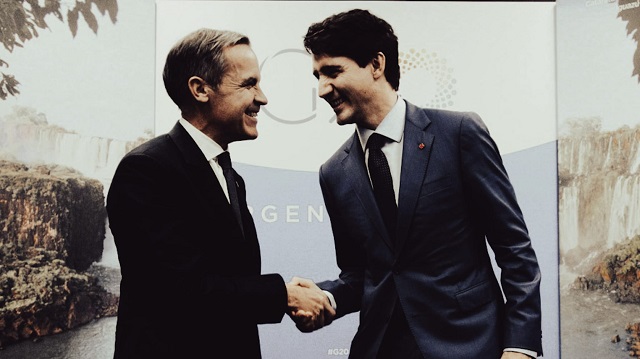
 2025 Federal Election24 hours ago
2025 Federal Election24 hours agoCanada is squandering the greatest oil opportunity on Earth
-
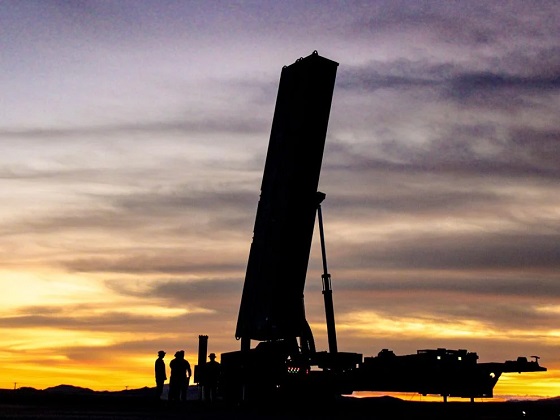
 International20 hours ago
International20 hours agoU.S. Army names new long-range hypersonic weapon ‘Dark Eagle’
-

 Addictions10 hours ago
Addictions10 hours agoFour new studies show link between heavy cannabis use, serious health risks
-

 Business12 hours ago
Business12 hours agoNet Zero by 2050: There is no realistic path to affordable and reliable electricity



